Violets are tender and bright flowers that invariably decorate the windowsill of modern houses and apartments and please their beautiful appearance. However, many people do not know that this wonderful flower can be grown in the garden or greenhouse.
Thus, in May, you can admire the freshness and variety of paints of violets - colors that can raise the mood to anyone. And they will not grow them in their site will not be great works and some effort, many aspects are similar to the cultivation of the laidka room.
In this article we will consider in more detail the features and description of the violet, as well as tell about the main types and varieties of this beautiful flower. We emphasize the important nuances of the agricultural machinery growing violets in the garden.
Features and description of violets
The violet is a perennial herbaceous plant, which is most often grown in our gardens as a biennial. This flower belongs to the family of violet and there are about 500 different species today, which in varying degrees have taken place around the world. Perennial garden violets can be attributed to the genus Viola. The most optimal conditions for the growth of these gentle colors are present in territories with a temperate climate, namely in Europe, Asia and America with such conditions. Sometimes you can meet violets and in subtropics and tropics.
There are several unusual history of the appearance of violets. According to one of them, which relates us to the times of the Gods of Olympus, Apollo pursued one nymph hot rays of the sun. A beautiful girl asked for help from Zeus, who, squeezing over her, turned her into a violet and covered in the shade of trees on Olympus. On Earth, these flowers fell after their daughter Zeus Proserpina dropped. Since then, everyone can admire the beauty of these colors.
In Germany, the violet is very often called "stepmother" for a peculiar form and structure of the flower. After all, the flower of violet consists of 5 gentle petals, which can be compared with a family of five: stepmothers, two native daughters and two pads. The brightest and beautifully painted petal - stepmother. If you turn the flower and look at it from below, you will see that this petal is framed by green cups. On both sides of the stepmother there are two beautiful petals - two native daughters. And at the very top are the smallest petals - stepdapers who have a more modest color.
Description of violets:
- Violets are most often perennial herbaceous plants, although occasionally there are annual and two-year varieties of this flower.
- Also sometimes there are violets growing in the form of small shrubs.
- All varieties of violets belong to low-speed plants, height can reach the maximum as possible.
- The leaves of violets can be located alternately on a stalk or be assembled into a beautiful root rosette.
- In the form of the leaves, it can be simple or peristracted, it all depends on the particular variety of the violet plant. Many violets have leaves on the form resembling a heart.
- All leaves are equipped with small horses.
- Filot flowers resemble a butterfly with 5 petals of various magnitudes. In diameter, one flower can reach 2-10 cm.
- Flowers are located singly on the stalks of the plant.
- Color painting can be different: white violets, yellow, blue, red, two-color and multicolor.
- The fruit of violets is a seed box. Usually in 1 grams are approximately 800 seeds, as they are very small.
- Seeds of violets retain the germination for two years.
- All violets prefer to grow into a slightly moistened and privided sections, so this rule should be followed when choosing a place to land these colors.
Variety of species and varieties of violets
Today there are more than 400 different types of violets, which differ in the height of the plant and colors. Read more Consider the most common and popular species and varieties of violets.
Fascular violet
- It is a perennial plant that has become widespread worldwide.
- The plant is low, it reaches only 15-18 cm.
- It is formed with the help of very creeping stems that quickly grow up, covering large areas.
- The root system is very chain, thanks to which the plant can be cling even for steep slopes.
- The leaves of this type of medium size in the form of a heart are collected in a root rosette.
- Flowers violet fragrant small single inflorescences up to 3 cm in diameter.
- Coloring can be blue or purple-lilac, as well as white and pink.
- In the form of flowers can be simple and terry.
- The violet has a very strong and pleasant smell.
- The flowering of this type of violet lasts for 20 days.
- If you decide to breed a plant, then you only need to use fresh seeds.
Popular varieties of violets fragrant or smell:
- Grade "Queen Charlotte". This plant has low growth and small flowers of a dark blue shade.
Violet horned
- It is also considered a low-level plant, which in height can grow only by 8-25 cm.
- The root system of violet is creeping and grow pretty quickly.
- The stalks are tightly covered by oblong gentle leaves.
- Flowers are small, as possible to reach at 3.5 cm.
- A distinctive feature of violets of this species - the presence of a small spurring from the back side of the cups.
- Coloring of the inflorescence is very diverse, but the main element is the yellow eye. Flowers can be lilac, blue, purple, blue, white, black.
- The horned violet prefers to grow at sunny places.
Popular varieties of violet horned:
- Grade "Princess Crim". Different with beautiful little pale yellow flower. The height of the bushes can reach 15 cm.
Violet Altai
- The natural habitat of this type of violet is the territory of Siberia and Kazakhstan.
- It has quite high growth of bushes.
- Long stems are small leaves.
- Single inflorescences, in diameter can reach up to 3 cm.
- Distinguish blue-purple varieties with yellow middle, white and beige violets with blue stripes on petals.
- The blooming violet of this species has a large number of colors on the bushes.
- Blossom comes in spring and autumn, it is distinguished by good frost resistance.
Violet monochromic
- The territory of Siberia and the Far East is considered to be the birthplace of this type of violet.
- The root system is located close to the surface of the soil.
- Correct and rather large gear leaves are departed from the root of the root roset.
- This plant grows very slowly, in the middle of August, the state of rest begins at the violet.
- It blooms only for two weeks with bright yellow solitary inflorescences.
- Flowers are small, in diameter can reach 2 cm.
Tricolor violet
- Such violets are annual plants and very often can be found in the fields of the European part of Russia.
- Many this type of violet is known as "Pansies".
- In the height of the bush of this flower can reach 30-40 cm.
- The bush is formed with the help of simple or branching stems, on which small oblong foxes are located.
- Flowers violet with single inflorescences of irregular shape.
- Painted flowers in dark purple shades with a yellow middle and purple border around the edge of petals.
Violet Labrador
- This type of violet is perfectly adapted to our climatic conditions and frosty winters.
- The bustard of this plant is formed with the help of sprinkling shoots that grow very quickly.
- The leaves are small, grow in the form of a heart.
- This type of violet is interesting to unusual coloring foliage - first it is a bright purple shade, and in time, such a color is saved only on young leaves, the rest acquire bronze tones.
- Flowers are small, located singly, high rise above the leaves.
- There may be all the shades of carmine-pink.
Violet nursing
- This type of violet was widespread in Europe.
- Bustic height can reach 20 cm.
- The root system is represented by a rather short creeping rhizome, which annually grows by 5-10 cm.
- Plant stalks covered with heart-shaped small leaves.
- Flowers are quite large, most often painted in blue, blue, purple and purple shades, as well as pink. You can also meet flowers with snow-white petals, on which the pattern is clearly visible in the form of specks or stripes.
Popular varieties of violet nursing:
- "Rubra". This kind of variety differs in the colors of all shades of pink.
- "Albiflora". Petals of flowers of this violet snow-white with a bright blue neck.
- "Freckles". A plant is distinguished by white flowers with violet specks.
Patalok reproduction: the most common ways
The violets are easy to dilute on their own site. To do this, it is important to choose the most suitable method of breeding violets for you. The most common are seed reproduction, shilling and dividing bush. At home, violet, for example, Uzambarskaya, multiply still with flowers, as well as with the help of leaves.
Seed reproduction of violets
- Modifying violets with the help of seeds optimally at the end of August - early September. It is done directly into open soil.
- An important condition for obtaining friendly shoots is fresh seeds.
- First you need to prepare a garden bed. Thoroughly shry the soil, it is important that it was fertile and nutritious.
- Next, on the prepared beds, make a shallow, approximately 1-1.5 cm, grooves.
- Since you sewer seeds under the winter, you do not need to expose the seeds of additional stratification. You can immediately hein in the ground, because in winter the seating material should be hardened in natural conditions.
- In shallow grooves, seed seeds of violets, and supper supreme layer of sand and mulch. It is desirable to use a dry and clean peat or humus as a mulch.
- The first shoots of violets will appear next spring.
- When the seedlings are growing and the first 2-3 leaves will appear on them, with too thick landing, the plants need to be conserved and dive. The average distance between seedlings during dive should be 5-7 cm.
- At the permanent place, the seedlings of violets are planted in August or September. They are blooming usually for the second year.
- Milk violets can be both everded, living in February or in March to containers.
- First of all, it is necessary to fill the prepared containers or drawers with a mixture of peat and sand.
- Next, be sure to span the soil and the seeds themselves with a solution of Fundazola to disinfect them.
- Seeds are sown along the surface of the substrate and are poured with a thin layer of sand. Top containers cover with glass.
- Place containers are necessary in the room with a temperature of 12-18 degrees.
- Different varieties of violets seeds at different ways, but most often an average of 1.5-2 months.
- After the appearance of germs, the containers are placed in a warmer temperature. And when 2 leaves appear, seedlings need to dive.
- In August or September, the seedlings of violets can be planted at a permanent place.
Reproduction of violet sticks
- Prepare the planting material in the form of cuttings is necessary from May to July.
- It is done when violets will become less colors and stems are a little proceed.
- For cuttings, you need to cut the upper part of the shoots that have at least three nodules.
- Pre-cutting can be treated with special solutions of the root former.
- After that, you can proceed to rooting the planting material. You can make it in the open soil or greenhouse.
- The rooting occurs quickly and successfully.
- Flower violets, multiplicated with cuttings, will bloom at the end of summer.
Breeding violet division bush
- This method of reproduction is also very popular for violets.
- Conduct the division of the violet bush in spring until the start of active vegetation and flowering plants.
- In this way, the virus is most often breeding, one-color, two-color and multicolor.
- The division is very simple. To do this, take a sharp knife or shovel and gently condemble the part of the violet bush.
- After that, you can transplant the disconnected part of the plant at a permanent place. It is best to choose a plot in a small shadow.
- Already by autumn, young plants will bloom, and by winter will grow a strong root system.
Stages of preparation before planting violets
Successful cultivation of violets on its plot depends on thorough preparation. To do this, it is important to choose high-quality and healthy seating, as well as find the most suitable landing place in the garden. Consider the entire preparation process.
Stage 1. Selecting planting material violets
- This stage is very important, since the successful growth of violets primarily depends on this.
- You can plant violets without problems with the help of seedlings, which is easy to grow independently. The main thing is to remember that seeding seeds need to be produced from February to April. In this case, the flowering plant you will get in the fall.
- You can buy seeds in specialized stores, and you can collect yourself, but it is more painting work.
- Also in special stores and agrofirmas engaged in professional breeding plants, you can buy rooted cuttings that need to be planted in spring on the prepared plot.
- When choosing a plant varieties, you need to think about the composition you plan. Almost all varieties of violet low plants, therefore, they need to plant them in the foreground of flower beds and flower beds.
- When buying cuttings or seedlings of violets in the store, be sure to carefully check out the condition. The planting material should not be visible damage and signs of diseases and the presence of pests.
Stage 2. Selecting a place for planting violets
- All violets in nature are growing in the cool shade of trees, therefore, in their plot, try to find the shaded place.
- These flowers will greatly grow on the illuminated places, but in a small shade, as abundant bloom is possible only in the cool climate.
- The selected plot should be well protected from strong winds and drafts.
- The landing site will first depend on the chosen variety of violets. The violets with creep stem can be planted as a soil plate, more tall flowers are perfectly suitable for framing the edge of flower beds and a flower garden.
Stage 3. Choice and preparation of soil under the landing of violets
- Violets prefer to grow on weak or neutral soil. If the acidity on your site is reduced then, you can add ammonium sulfate. If on the contrary, then the substrate needs to add dolomite flour.
- The soil under the landing should be nutritious and fertile.
- It is also important that the substrate was loose and perfectly missed air and moisture.
- If you plan to plant a viper in the spring, then the site can be prepared in the fall. To do this, carefully disappear about 2 bayonet shovels. During processing, you can add overworked humid and peat. You can not use fresh manure.
- After that, thoroughly crumple the bed. And in the spring, it is possible to quickly explode the soil again to saturate it with oxygen.
Technology landing violet
- The violets can be planted in open soil at different times, it all depends on the particular planting material. Seeds can be sung directly into the ground under the winter, so you get a flowering plant much earlier. The acquired rooted choppers are planted in spring.
- The selected area is once again necessary to thoroughly and explode.
- It is also important to prepare landing material. Acquired cuttings or seedlings in special cassettes must be poles to more secure plant extraction.
- Next, on the landing plot, prepare the landing wells. If you sit down several plants together, it is important to observe a sufficient distance between violets. On average, it should be 15-25 cm.
- After that, carefully remove the seedlings of violets from containers or cassettes and place in landing pits.
- Plants Carefully float the soil and slightly press the hands.
- After planting, paint each plant, you can pour a special solution of complex mineral fertilizers for faster rooting.
Fials growing agrotechnics: Secrets and care nuances
The question of how to care for violets to obtain a lush flowering plant, worries many gardeners, both experienced and beginners. There is nothing complicated here, the main thing is to periodically pay attention to the plant and comply with some rules of care. As a result, you will get beautiful and bright colors that will decorate your site or garden for the whole season.
Watering violets
Watering is considered an important component of the proper care of this plant. Watering need moderately and regularly. Especially often, the violet needs moisture in the hot season. When watering, make sure that the water does not fall into the leaves of violets, otherwise the plant can start rotting. If you grow a violet indoor, be sure to ventilate the room to saturate it with oxygen.
Loosening and mulching
Violets prefer to grow on light and loose soil. Therefore, after each irrigation, it is recommended to loosen the soil around the colors. It is necessary to do it carefully, so as not to damage the root system of violets, because some varieties of roots are superficial. The soil around the colors can be meditated to prevent excessive evaporation of moisture. As a mulch, use a dry peat. During loosenings, be sure to remove all weeds - they can slow down the growth of the violet itself.
Up. Palok
The violets do not endure fresh organic fertilizers of the type of manure, so give preference to the recoverable compost or complex mineral fertilizers. It is possible to fertilize violets before starting active vegetation and after the end of flowering so that the plant will be able to gain strength before the cold. Comprehensive mineral fertilizers can be simply scattered around the plants, while watching the granules do not fall on the leaves.
Transplanting viok
The transplant of your violet can be carried out during the renewal of the bush, which periodically expediently conduct. In parallel, you can proceed with the plant by dividing the bush. It is best to do it early in the spring when the violet is at rest. Carefully dig a viper bush, to reproduce the sharp knife, disconnect several parts and plan them on the prepared places.
Diseases and pests of violets
Pests:
- Gallean nematode. It strikes the root system of the plant, from which small bloat appears on the roots. To combat this pest, you can use conventional boiled water, which marks the soil around violets.
- Cute tick. A sign of the appearance of this pest is considered a lightweight web on the leaves and plants stems. To combat it, you can use special insecticide preparations.
- Pearlism phials. These caterpillars eat the leaves of violets. To combat such pests, you can use tobacco or chlorophos infusion.
Diseases of violets:
- Gray rot. This disease can manifest itself after long rain or with a constant floating plant. Signs of the disease are brown spots on the leaves. To combat the gray rot at small manifestations, special chemicals are used and removing damaged areas. With a strong defeat, it is better to remove all the plant.
- Blackleg. This disease amazes the stalk of the plant, from which the whole flower begins to weaken and dying. For the struggle, you can use Fundazole, which should be treated with the soil.
Photo by viok.
You can more clearly see all the peculiarities of the appearance and the conditions of growing violets on the photos proposed below.
The violet is not only a beautiful room flower, but also a stunning decoration of the garden plot. You will only need attention and care for this gentle and fragile plant.

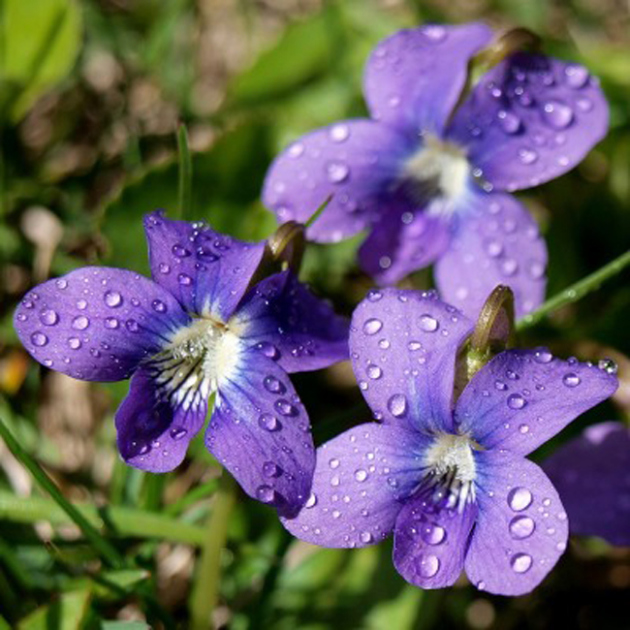
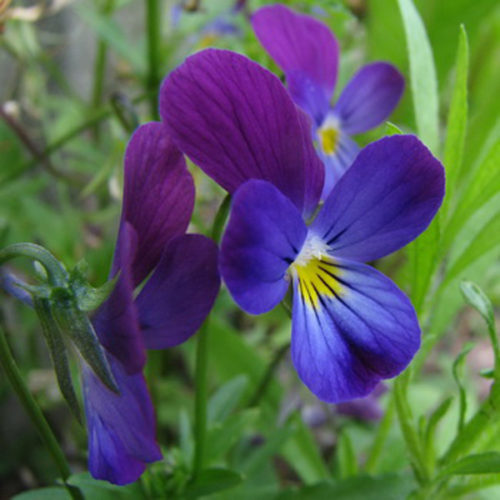
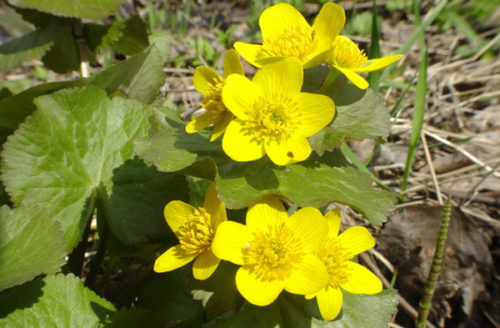
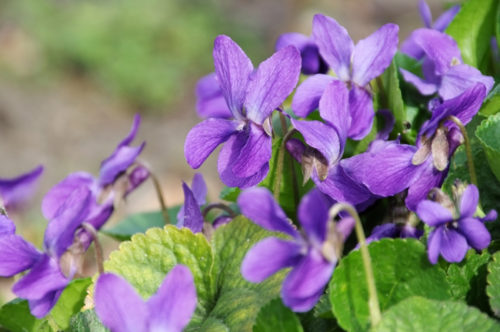
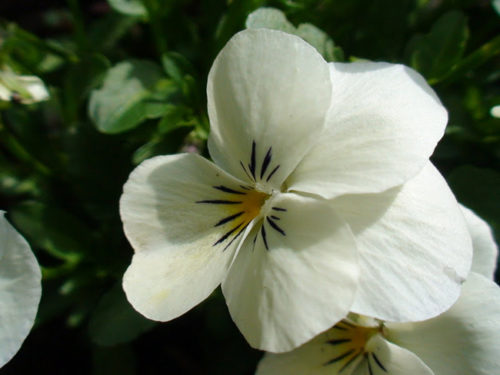
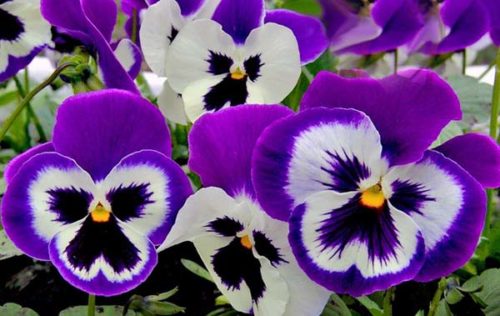
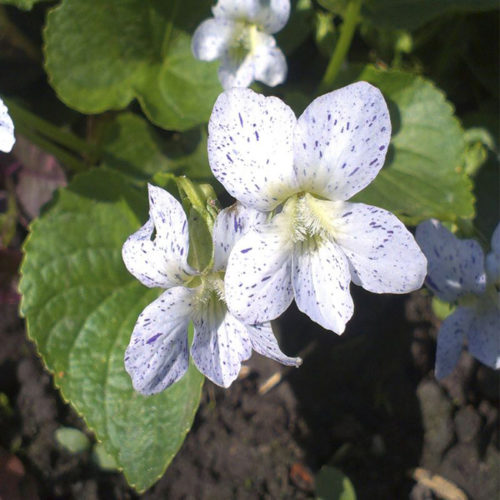
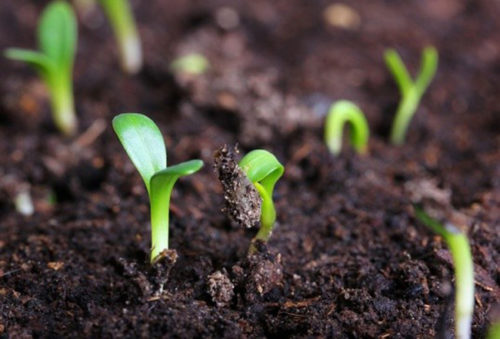
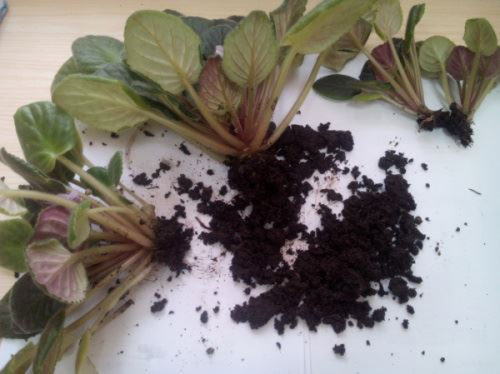
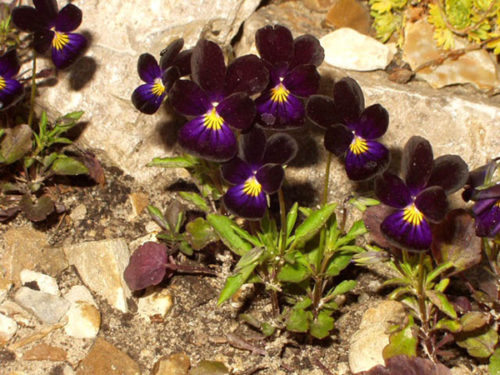

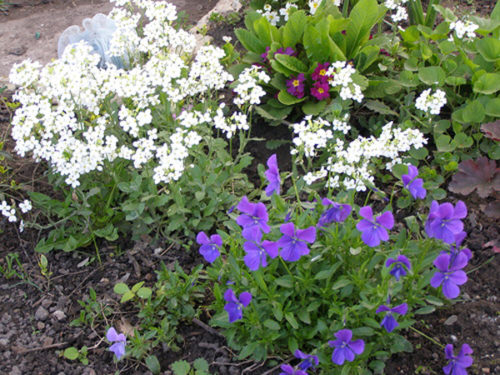

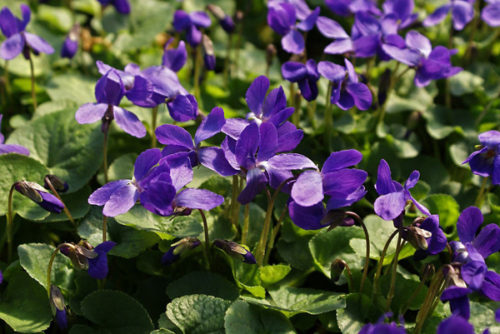
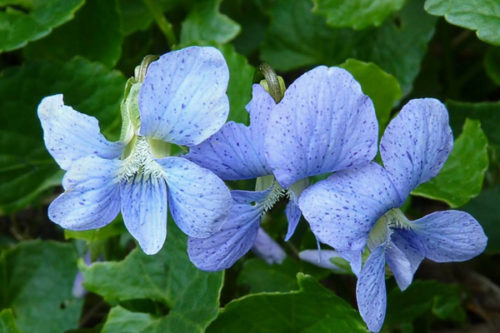
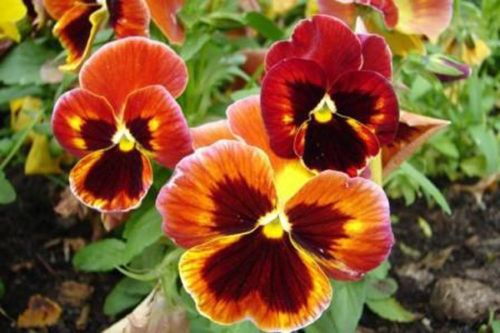
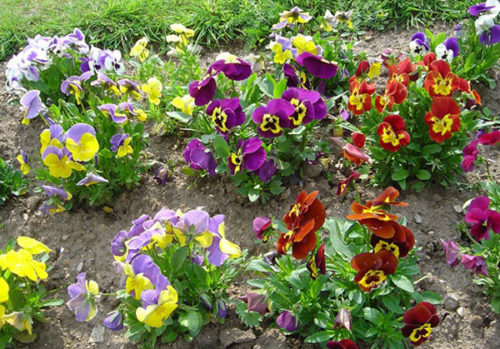












 Start a discussion ...
Start a discussion ...